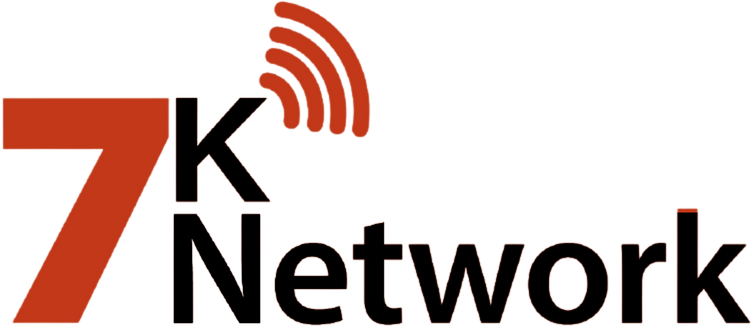As companies continue to expand across borders and embrace remote work, hiring from a global talent pool has become both an opportunity and a challenge. While this broadens access to diverse, highly skilled candidates, it also means adjusting recruitment strategies to suit the nuances of international hiring. To successfully attract and onboard top talent from around the world, recruiters must leverage best practices for a global workforce, using digital tools like a recruitment website and hiring software to enhance the process.
So, how can recruiters navigate the complexities of remote hiring in a way that optimizes both candidate experience and hiring efficiency? Here’s a look at the best practices to adopt for hiring remote talent, from choosing the right hiring software to building a seamless remote onboarding experience.
1. Create an Engaging Recruitment Website that Reflects Best Practices for a Global Workforce

Your recruitment website is the face of your hiring process. It’s where potential candidates from around the world get their first impression of your company, so it needs to reflect an inclusive, global approach. Beyond the basics, such as listing open roles and company values, a recruitment website geared for global hiring should incorporate content that appeals to diverse audiences.
Best practices for a global recruitment website:
Highlight inclusivity
Include language and visuals that emphasize inclusivity, featuring testimonials or case studies from employees across various regions.
Localized content
Consider tailoring certain parts of your website for different regions or languages to make international candidates feel more at home. While doing so, it’s important to factor in website translation cost, which can vary depending on the number of languages, content volume, and whether you use human translators or automated tools.
Clear communication on remote opportunities
If you’re a remote-first company or offer flexible locations, make this prominent. Use specific language like “Remote – Open to All Time Zones” or “Global Remote Opportunities” to clarify that international applications are welcome.
An engaging recruitment website not only attracts top talent but also helps candidates envision themselves as part of a team that celebrates diversity, which can be a major draw for highly skilled professionals worldwide.
2. Use hiring software to organize and manage the recruitment process.

Hiring remotely involves juggling multiple time zones, navigating different hiring regulations, and often screening a higher volume of applications. This is where recruitment marketing tools prove invaluable, providing centralized tools that simplify these processes and enable more effective collaboration among recruiters.
Key features to look for in hiring software:
Automated candidate screening
With automated screening features, hiring software can help quickly shortlist candidates based on specific qualifications, saving time for recruiters.
Time zone management
Some hiring tools allow candidates to schedule interviews based on their local time zones, reducing scheduling conflicts and improving the candidate experience.
Investing in the right recruiting software can also enhance collaboration within recruitment teams. By centralizing candidate profiles, interview notes, and decision-making, it ensures every recruiter, no matter their location, has the information they need to make informed hiring decisions.
3. Build a structured remote interview process

Interviewing remote candidates poses unique challenges, as it relies on virtual meetings and may lack the natural flow of in-person interactions. To ensure candidates get a clear picture of your company culture and their potential role, it’s essential to create a structured, standardized interview process.
Best practices for remote interviews:
- Equip your team with reliable video conferencing software and test it beforehand. This avoids technical disruptions and creates a smoother experience for candidates.
- Scheduling interviews across different time zones can be tricky. Hiring software can help, but clear communication with candidates is also essential to avoid misunderstandings.
- Standardize your questions and format to provide a fair and consistent experience for every candidate. This is especially crucial in remote hiring, where differences in cultural norms and communication styles can affect interactions.
- A structured remote interview process not only enhances the candidate experience but also minimizes biases and ensures each candidate is evaluated fairly.
Also Read: Tools And Skills for Journalists and Writers
4. Embrace asynchronous assessments for a deeper insight into candidates’ skills

When recruiting from a global talent pool, assessing candidates synchronously can be difficult, especially if time zones vary significantly. Asynchronous assessments—such as recorded video responses, coding tests, or written exercises—are a great way to gauge candidates’ skills on their schedules.
5. Focus on building a remote-friendly employer brand
For global hiring to be successful, your company must establish itself as a desirable remote employer. This means clearly articulating what sets your company apart as a remote-friendly workplace. Many candidates prioritize flexibility and work-life balance, especially in a remote setup, so make sure these values are woven into your employer brand.
How to build a remote-friendly employer brand:
Promote your remote work policies
Communicate remote policies on your recruitment website, and highlight aspects such as flexible work hours, wellness benefits, and professional development opportunities.
Share remote employee testimonials
Candidate trust increases when they hear directly from employees. Include video or written testimonials on your recruitment website from team members working remotely.
Highlight tools and support for remote work
Detail the tools your company provides, such as communication software, productivity platforms, and resources for remote employees, which shows you’re committed to a seamless remote work experience. Also, highlight that you choose to use the best PSA software to streamline project management and time tracking, making remote collaboration more efficient. Complementing this, procurement management software helps ensure that essential resources are always available, no matter where your team is based.
By reinforcing your reputation as a remote-friendly company, you’ll attract global talent who value flexibility and are aligned with your company’s approach to remote work.
6. Simplify and personalize the remote onboarding experience
Once you’ve hired remote talent, a comprehensive and engaging onboarding process is essential. Remote onboarding is about more than setting up accounts and sharing documents; it’s an opportunity to introduce new hires to your culture, values, and team dynamics.
7. Continuously gather feedback and refine the hiring process
Remote hiring is an evolving field, and practices that work well today may need adjustments tomorrow. Gathering feedback from candidates and hiring teams alike is crucial for refining your approach and keeping your processes efficient.
The global talent pool offers limitless potential, but remote hiring requires thoughtful strategies and the right tools to bring the best candidates on board. From optimizing your recruitment website to using robust hiring software, every step of the remote hiring process can be fine-tuned to attract, engage, and retain exceptional talent across the globe. Embrace these best practices, and turn remote hiring into a streamlined, efficient process that brings the world’s top talent to your doorstep.
Unlock the secrets to remote recruitment success—download your free guide now and elevate your recruitment to new heights!

